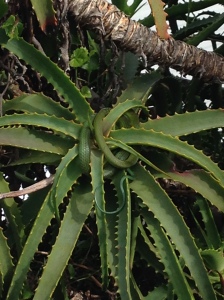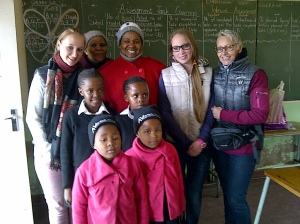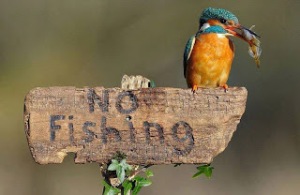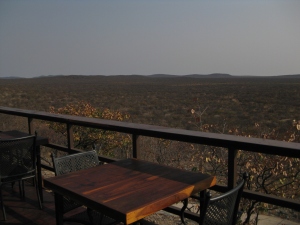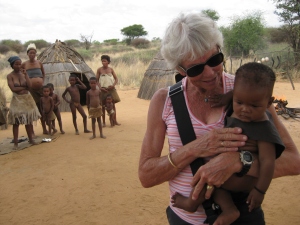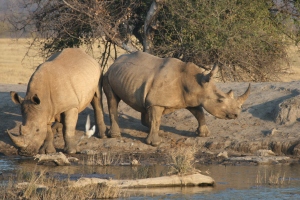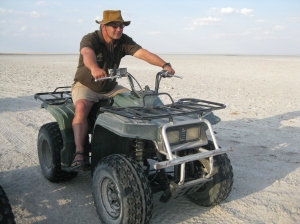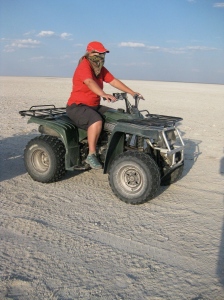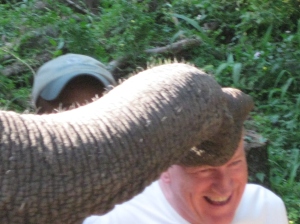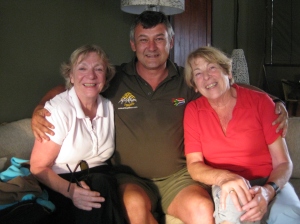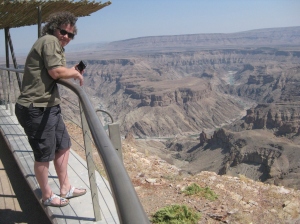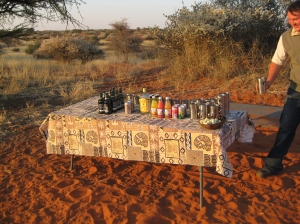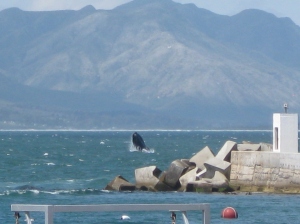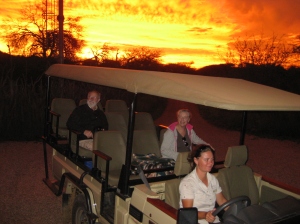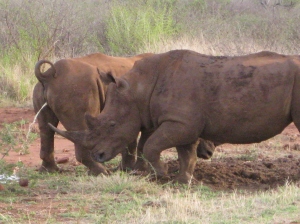My town of birth in 1969-12-16. Rustenburg – North-west Province – South Africa.
Have you tried to learn more about your own town and maybe some mystery there?
FROM: https://en.wikipedia.org/wiki/Rustenburg
Rustenburg is prominent in Afrikaner history. The town was established in 1851 as an administrative centre for a fertile farming area producing citrus fruit, tobacco, peanuts, sunflower seeds, maize, wheat and cattle. On 10 February 1859, the local Dutch Reformed Church community was established. One of the oldest Boer settlements in the north, Rustenburg was the home of Paul Kruger, president of the South African Republic, who bought a 5 square kilometer farm to the north-west of the town in 1863. The homestead on his farm, Boekenhoutfontein, is now the Paul Kruger Country Museum. When the Boer and the British came to blows in the Second Boer War (1899), the territory around Rustenburg became a battlefield. The two sides clashed famously at nearby Mafikeng, where the British garrison found itself under siege for months. These battle sites can be explored from Rustenburg.
Before European settlers arrived, the area had been settled by agrarian Setswana speaking tribes for several hundred years after colonising the native pastoralist Khoikhoi people. Rustenburg’s population is primarily Tswana people. Many belong to the Royal Bafokeng Nation, extensive landowners earning royalties from mining operations. The Royal Bafokeng are descendants of Sotho settlers who displaced the local tribes from the region, which they came to call ‘place of dew’ (Phokeng). In the early 1800s, the Bafokeng and other Tswana communities were conquered in a series of devastating wars launched by an offshoot of the Zulu kingdom, called the Matabele. The Boers had also fought the Zulu and Matabele, and so the Boers and Tswana found in the Matabele a common enemy. The Tswana and Boers planned together and worked toward defeating the Matabele from a Sotho-Tswana kingdom to the south, and together, they defeated the Matebele. As the Boers settled in the area, called their settlement Rustenburg because they had relatively friendly relations with their Bafokeng allies in the area, and after the many violent military conflicts with other African chiefdoms, such as the Matabele, they believed they could rest (“rusten” in Dutch) in this settlement, whose name literally means “Resting Town.” Although had already long lived in the area when the Boers arrived, the Bafokeng bought land rights from the Boers, and they purchased their first tracts of land in the late nineteenth and early twentieth century from the colonial rulers, some in exchange for serving in the Boer Wars. Although these land purchases were technically illegal, Paul Kruger, who would become a president of the Transvaal Boer Republic, but was then a veld kornet, was friendly to the Bafokeng and helped arrange many of these purchases. The majority of people in the region 20 years after the fall of apartheid still live in abject poverty despite the massive profits yielded by the platinum royalties. This has led in recent years to claims of kleptocracy against the ‘royal’ family and land claim disputes.
Among the first residents of Rustenburg were settlers of Indian origin. One of the first families of Indian origin was the Bhyat family, whose contribution to the city’s history was marked by the renaming of a major streetname to Fatima Bhayat Street in honour of Fatima Bhyat who arrived in Rustenburg with her husband in 1877.
With the arrival and successful farming practices of the Afrikaners (Boers) in the nineteenth century, Rustenburg became a primary agricultural region with vast citrus estates due to the favourable climate and abundant water supply.
Platinum mining in Rustenburg began in 1929, shortly after the discovery of the Platinum Reef by Hans Merensky, later named the Merensky Reef. The town has been transformed from a region recognized around the world since the 19th century for its natural springs and healing environment, as eloquently described in the book ‘Rustenburg Romance’ by author and poet Eric Rosenthal into one of the most polluted environments in the late 20th and early 21st century South Africa. The wanton despoliation of the environment through mining has drawn comparisons to the Norilsk complex in Russia, one of the ten most polluted cities in the world.
With the implementation of apartheid after 1948 life became more severe for ‘non-whites’ with 9 pm curfews and the most stringent enforcement of pass laws in the country. This was welcomed by the mining industry as it gave them a tighter grip on the migrant labour which was the backbone of their operations. Ethnic groups were moved forcibly from the center of town to the Indian, Coloured or Black areas, Zinniaville, Karlien Park and Boitekong respectively. The pass laws were abolished with the fall of apartheid.
The township of Boitekong on the northeast side of Rustenburg has one of the highest incidence of AIDS orphans in South Africa Boitekong was the venue for World AIDS Day commemoration in December 2010. The township is in a geographical area which bears the brunt of the catchment area of the toxic effects of the mining industry coupled with a very poor quality of water supply from the local Bospoort Dam, the water from which was for decades considered too toxic for human consumption until water shortages in the nineties compelled the purification and supply to Boitekong. Life for the majority under the rule of the ‘Royal Bafokeng’ has parallels to the apartheid era. In the Apartheid era, forced removals of old settlements were on the basis of racial divide whereas now it is done for installation of massive mining operations sometimes engulfing entire villages. (see ‘Rasimone’ on Google Earth)
The Royal Bafokeng own the stadium selected as a World Cup 2010 venue, the only ‘private’ stadium that hosted games in the 2010 World cup. The Royal Bafokeng regard themselves as a ‘separate nation’ which is in contradiction to the Rainbow nation espoused by Desmond Tutu and Nelson Mandela. This ‘nationhood’ is regarded by many today as a divide and rule tactic orchestrated by the mining conglomerates which has subsequently led to the calls for nationalization of the mining industry by the ANC Youth League.
Agriculture in the region has been in constant decline since the decimation of the vast citrus estates of Rustenburg in the 70’s and 80’s due to pollution from increased smelting and beneficiating processes by mines. There are only a fraction of the original citrus farms remaining.
Comparisons can be drawn between the Klondike gold rush and the events in Rustenburg in the late 20th and early 21st century which led to it becoming one of the fastest growing cities in South Africa.
In 1990, the first post-Apartheid conference between the Nederduits Gereformeerde Kerk (the Dutch Reformed Church in Africa) and the South African churches was held in Rustenburg. During this conference, professor Willie Jonker of the University of Stellenbosch made this confession on behalf of the entire DRC:
“[I] confess before you and before the Lord, not only my own sin and guilt, and my personal responsibility for the political, social, economic and structural wrongs that have been done to many of you and the results [from] which you and our whole country are still suffering, but vicariously I dare also to do that in the name of the NGK [the white DRC], of which I am a member, and for the Afrikaans people as a whole.”
The conference finally resulted in the signing of the Rustenburg Declaration, which moved strongly toward complete confession, forgiveness, and restitution.
In August 2012, South African police fatally shot 34 miners and wounded 78 more during an industrial dispute Marikana miners’ strike near Rustenburg, it was the most lethal use of force by South African security forces since the end of the apartheid era.




 Verwoerd returns to South Africa after the expulsion from the Commonwealth © Rapport
Verwoerd returns to South Africa after the expulsion from the Commonwealth © Rapport



